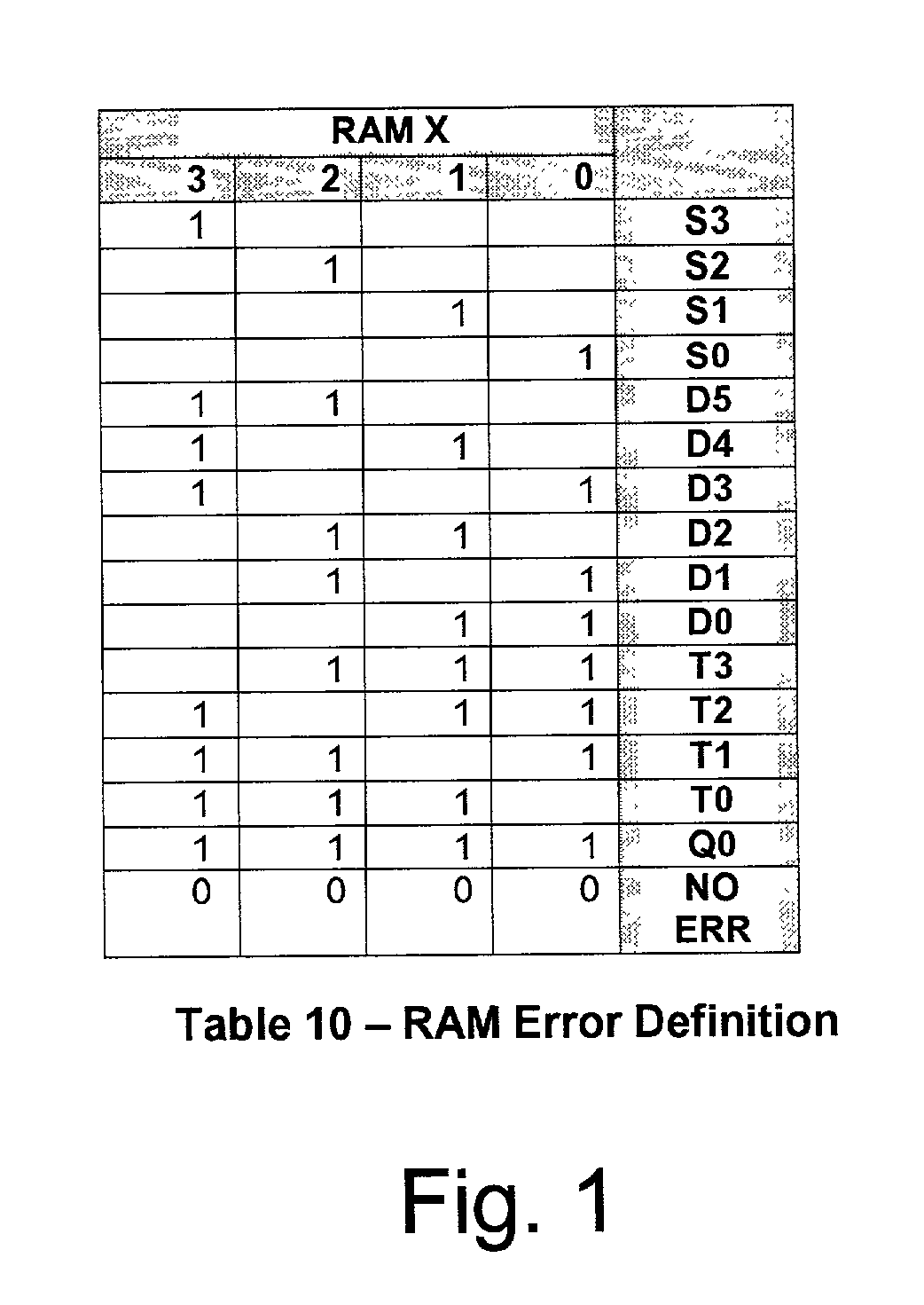Familial correction with non-familial double bit error detection for directory storage
a technology of directory storage and error detection, applied in the field of familiar correction with non-familial double bit error detection for directory storage, can solve the problems of compromising the desire for perfect error correction and detection, wasting memory, and affecting the reliability of the memory subsystem
- Summary
- Abstract
- Description
- Claims
- Application Information
AI Technical Summary
Benefits of technology
Problems solved by technology
Method used
Image
Examples
Embodiment Construction
[0041]The preferred component concepts and parts are described first, and then the preferred functioning of the invention is described. The accommodation of the invention to directory store data is explained throughout.
[0042]Please refer first to FIG. 1 in which the RAM error definition table 10 is illustrated, having five columns, the first four of which (R) indicate the DRAM or RAM bit number for each RAM under consideration. These four bits are said to be family bits or familial, because they are within a single RAM device. In some texts this is referred to as “adjacency,” but we find that term confusing since the last bit in one RAM might also be considered adjacent to the first bit in the next RAM. So, for purposes of discussion within this patent, we say that all bits within a DRAM or RAM device with be considered familial bits and those outside are not familial or are not part of the same family. We label the rows 0–16 of FIGS. 1's table 10 for later reference.
[0043]Table 10 ...
PUM
 Login to View More
Login to View More Abstract
Description
Claims
Application Information
 Login to View More
Login to View More - R&D
- Intellectual Property
- Life Sciences
- Materials
- Tech Scout
- Unparalleled Data Quality
- Higher Quality Content
- 60% Fewer Hallucinations
Browse by: Latest US Patents, China's latest patents, Technical Efficacy Thesaurus, Application Domain, Technology Topic, Popular Technical Reports.
© 2025 PatSnap. All rights reserved.Legal|Privacy policy|Modern Slavery Act Transparency Statement|Sitemap|About US| Contact US: help@patsnap.com



